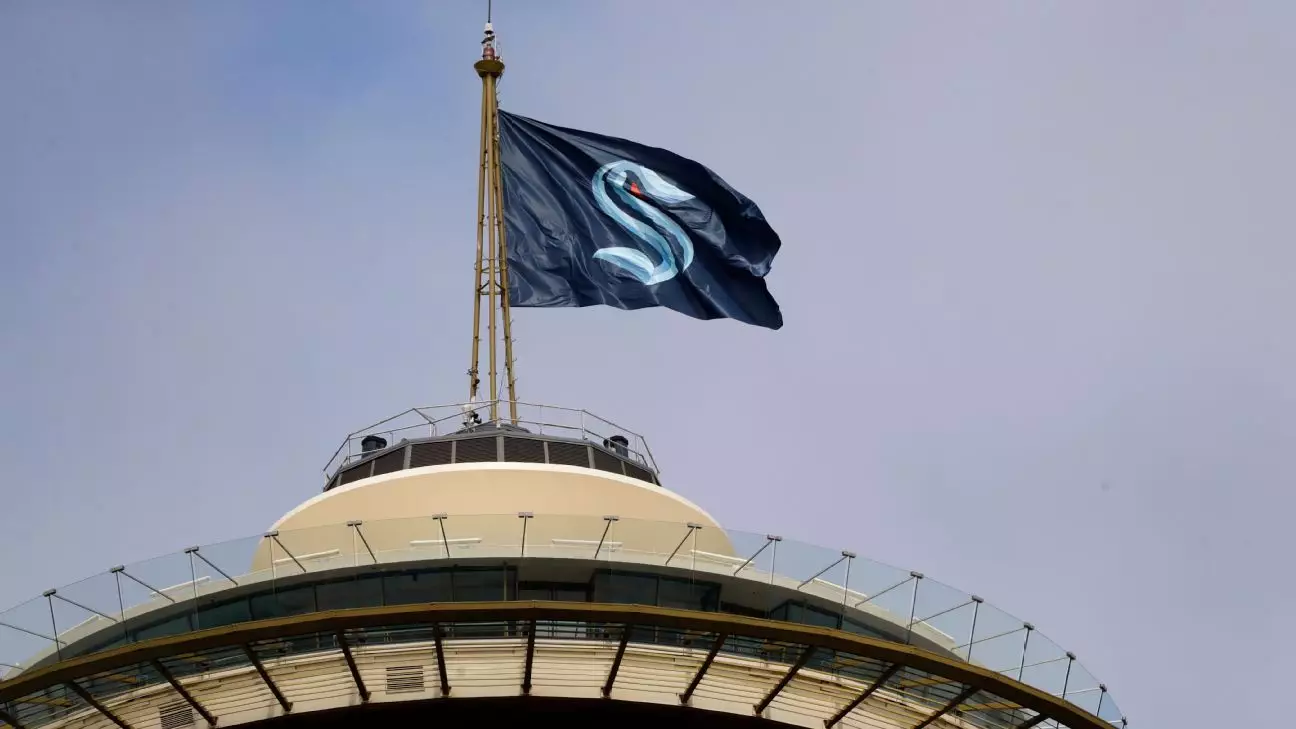In a seemingly peaceful adventure designed to promote youth hockey, a spontaneous face-off with nature’s raw power unfolded, reminding us of the unpredictability lurking in even the most controlled environments. During a promotional fishing trip in Katmai National Park, famed for its rugged beauty and impressive brown bears, Seattle Kraken forward John Hayden and the team’s colorful mascot, Buoy, found themselves in an unanticipated and potentially dangerous situation. The bear’s approach, captured on video, underscores how fragile our understanding of wild animals really is, especially in their natural habitat.
The footage, intended as a light-hearted promotional piece, showcases the hazards that come with trying to interact with wilderness on its terms. Despite being equipped with waders and safety guides, Hayden and Buoy weren’t immune to the unpredictable behavior of a creature weighing hundreds of pounds. The bear, clearly interested and curious, charged toward Buoy—the mascot’s striking blue hair and troll-like appearance evidently piquing the animal’s interest. Yet, the incident ended without harm, a fleeting reminder of nature’s boundaries and the importance of respect for wildlife.
Misreading Nature’s Tolerance
The handling of such encounters raises significant questions about human interaction with animals in their habitats. The team claimed the bear was never intended to be part of the filming, and the guides present were specifically hired for their expertise in safety protocols. Nonetheless, the appearance of the bear, the most iconic predator in Alaska, during the shoot was somewhat inevitable given the location’s reputation. Katmai is home to countless bears who hunt salmon during salmon spawning season—a spectacle that has charmed millions but also demands vigilance from visitors.
It’s revealing how people tend to underestimate the complexity of wildlife behavior. The park’s bears, adapted to a life of survival and seasoned by thousands of years of existence, see humans as either intruders or potential threats—never purely as entertainment. The incident with Hayden and Buoy could serve as a sobering lesson: nature is neither polite nor predictable. Approaching it with casual indifference or underestimating its power is a risk that should never be taken lightly.
The Broader Message: Respect and Preparedness
The incident’s broader implication is a call for greater awareness and humility when engaging with the wild. While guides and safety protocols mitigate risks, they can’t eliminate them entirely. The incident also highlights how media outputs—such as promotional videos—can inadvertently overlook the importance of respecting wildlife boundaries. Visual storytelling often sacrifices nuance for entertainment, leading to potentially dangerous misunderstandings about wildlife behavior.
John Hayden’s playful comments blaming Buoy for attracting the bear lightheartedly reflect a human tendency to shift responsibility or chalk up experiences to humor. However, real lessons should emphasize that nature’s unpredictability demands respect and preparedness, especially in remote regions like Katmai. There is a critical need for organizations to prioritize safety and education over spectacle, ensuring that visitors and media crews understand that wilderness encounters are inherently unpredictable. Ultimately, the message is clear: nature’s wildness is a force to be admired—and respected—rather than exploited or underestimated.


Leave a Reply